Ditapis dengan
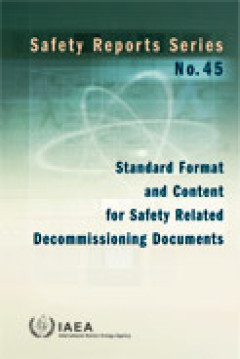
Standards Format and Content for Safety Related Decommisioning Document
This report provides information on the content and format for decommissioning plans and supporting safety related documents. Its scope includes information that is relevant to all types of nuclear facilities, ranging from nuclear power plants and reprocessing facilities to university laboratories and manufacturing plants. The report will be of interest to decommissioning planning engineers, pr…
- Edisi
- -
- ISBN/ISSN
- -
- Deskripsi Fisik
- 64 p. : Illus. ; 24 cm
- Judul Seri
- Safety Reports Series No. 45
- No. Panggil
- -
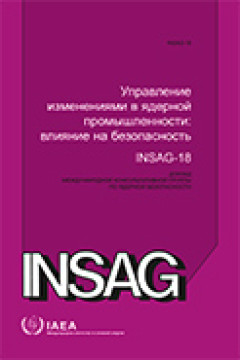
Managing Change in the Nuclear Industry: The Effects on Safety
This INSAG report is written for members of boards of directors and senior executives who are responsible for the overall safety of an installation, who make decisions for change, and who implement those decisions. It is also written for senior regulators who, on behalf of the public, ensure that boards of directors and executives meet their responsibilities for safety. The report discusses how…
- Edisi
- -
- ISBN/ISSN
- 9201134037 / 10252169
- Deskripsi Fisik
- 12 p. : Illus. ; 24 cm
- Judul Seri
- INSAG-18
- No. Panggil
- -
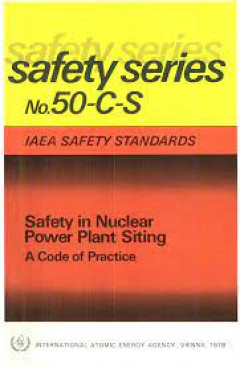
Code on the Safety of Nuclear Power Plants: Siting, Safety Standards
This code recommends how to evaluate the site related factors that are taken into account to ensure that the plant–site combination does not constitute an unacceptable risk. After defining the roles of the applicant and the regulatory body in site selection, evaluation and approval, general criteria are given for selecting proposed sites and assessing their suitability, for determining site r…
- Edisi
- -
- ISBN/ISSN
- 9201233884 / 00741892
- Deskripsi Fisik
- 36 p. : Illus. ; 24 cm
- Judul Seri
- Safety Series No. 50-C-S (Rev.1)
- No. Panggil
- 629.135 IAE c
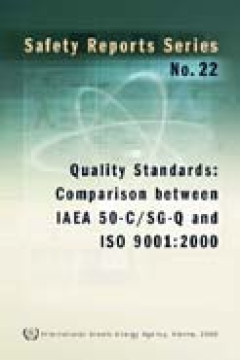
COMPARISON BETWEEN IAEA 50-C/SG-Q AND ISO 9001-2000, QUALITY STANDARDS (e-book)
This Safety Report compares the requirements of IAEA Safety Series No. 50-C/SG-Q, Quality Assurance for Safety in Nuclear Power Plants and other Nuclear Installations (1996), with the ISO 9001:2000 standard issued by the International Organization for Standardization. It identifies the main differences between the ISO quality standards and the additional requirements and guidance contained with…
- Edisi
- -
- ISBN/ISSN
- 9201111029 / 10206450; no. 22
- Deskripsi Fisik
- 57 p. : Illus. ; 29 cm
- Judul Seri
- Safety Reports Series No. 22
- No. Panggil
- -
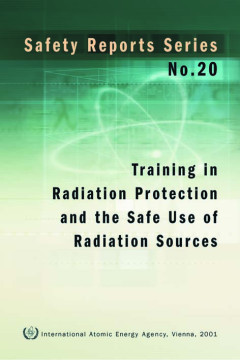
Training in Radiation Protection and the Safe Use of Radiation Sources
This report provides assistance in how to organize adequate and appropriate training for personnel working with ionizing radiation. It is primarily intended to be used by trainers and training providers, and covers among other topics the various methods of training provision and gives advice on the development and organizational aspects associated with the management of training activities. It …
- Edisi
- -
- ISBN/ISSN
- 9201006012/10206450
- Deskripsi Fisik
- 69 p. : Illus. ; 24 cm
- Judul Seri
- Safety Reports Series No. 20
- No. Panggil
- -
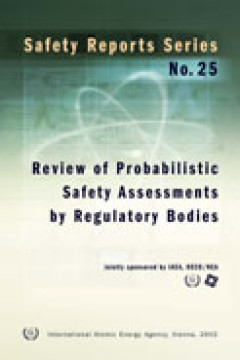
REVIEW OF PROBABILISTIC SAFETY ASSESSMENTS BY REGULATORY BODIES (e-book)
This report provides detailed guidance on how to review probabilistic safety assessments (PSAs) for nuclear power plants with the purpose of providing a basis for taking risk informed decisions within a regulatory decision making process. It gives a detailed account of the field and also addresses the relevant technical issues.
- Edisi
- -
- ISBN/ISSN
- 9201175027/10206450 ; no. 25
- Deskripsi Fisik
- 153 p. : Illus. ; 29 cm
- Judul Seri
- Safety Reports Series No. 25
- No. Panggil
- -
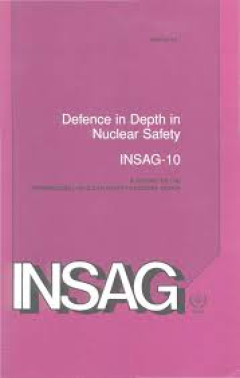
Defence in Depth in Nuclear Safety
The present report deals with the concept of defence in depth in nuclear and radiation safety, discussing its objectives, strategy, implementation and future development. The report is intended for use by governmental authorities and by the nuclear industry and its supporting organizations. It is designed to stimulate discussion and to promote practical action at all levels to enhance safety. …
- Edisi
- -
- ISBN/ISSN
- -
- Deskripsi Fisik
- 33 p. : illus. ; 24 cm
- Judul Seri
- INSAG-10
- No. Panggil
- 363.179 IAE d

The Safe Management of Sources of Radiation: Principles and Strategies
This INSAG report deals with the general principles governing the safety of all sources of radiation and with the application of these principles. It seeks to demonstrate that, at the conceptual level, the distinction traditionally made between nuclear safety and radiation protection is not justified. This report is primarily intended for the non-specialist who needs to take decisions about the…
- Edisi
- -
- ISBN/ISSN
- 9201021992 / 10252169
- Deskripsi Fisik
- 27 p. : Illus. 24 cm
- Judul Seri
- INSAG-11
- No. Panggil
- 539.2 IAE s
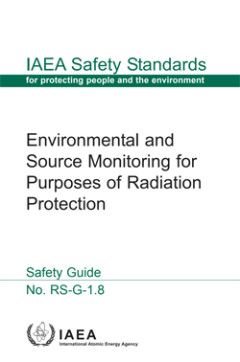
Environmental and Source Monitoring for Purposes of Radiation Protection, Saf…
The purpose of this Safety Guide is to provide international guidance, coherent with contemporary radiation protection principles and IAEA safety requirements, on the strategy of monitoring in relation to: (a) control of radionuclide discharges under practice conditions, and (b) intervention, such as in cases of nuclear or radiological emergencies or past contamination of areas with long lived …
- Edisi
- -
- ISBN/ISSN
- 9201134045 / 1020525X
- Deskripsi Fisik
- 119 p. : Illus. ; 24 cm
- Judul Seri
- Safety Standards No. RS-G-1.8
- No. Panggil
- -

Protection in Nuclear Medicine and Ultrasound Diagnostic Procedures in Children
This book consist : Introduction and scope; Pedriatic nuclear medicine; and Pediatric diagnostic ultrasound; (Jml)
- Edisi
- -
- ISBN/ISSN
- 0913392634
- Deskripsi Fisik
- 81 p. : Illus. ; 23 cm
- Judul Seri
- NCRP Report No. 73
- No. Panggil
- 618.92 NCR p
 Karya Umum
Karya Umum  Filsafat
Filsafat  Agama
Agama  Ilmu-ilmu Sosial
Ilmu-ilmu Sosial  Bahasa
Bahasa  Ilmu-ilmu Murni
Ilmu-ilmu Murni  Ilmu-ilmu Terapan
Ilmu-ilmu Terapan  Kesenian, Hiburan, dan Olahraga
Kesenian, Hiburan, dan Olahraga  Kesusastraan
Kesusastraan  Geografi dan Sejarah
Geografi dan Sejarah